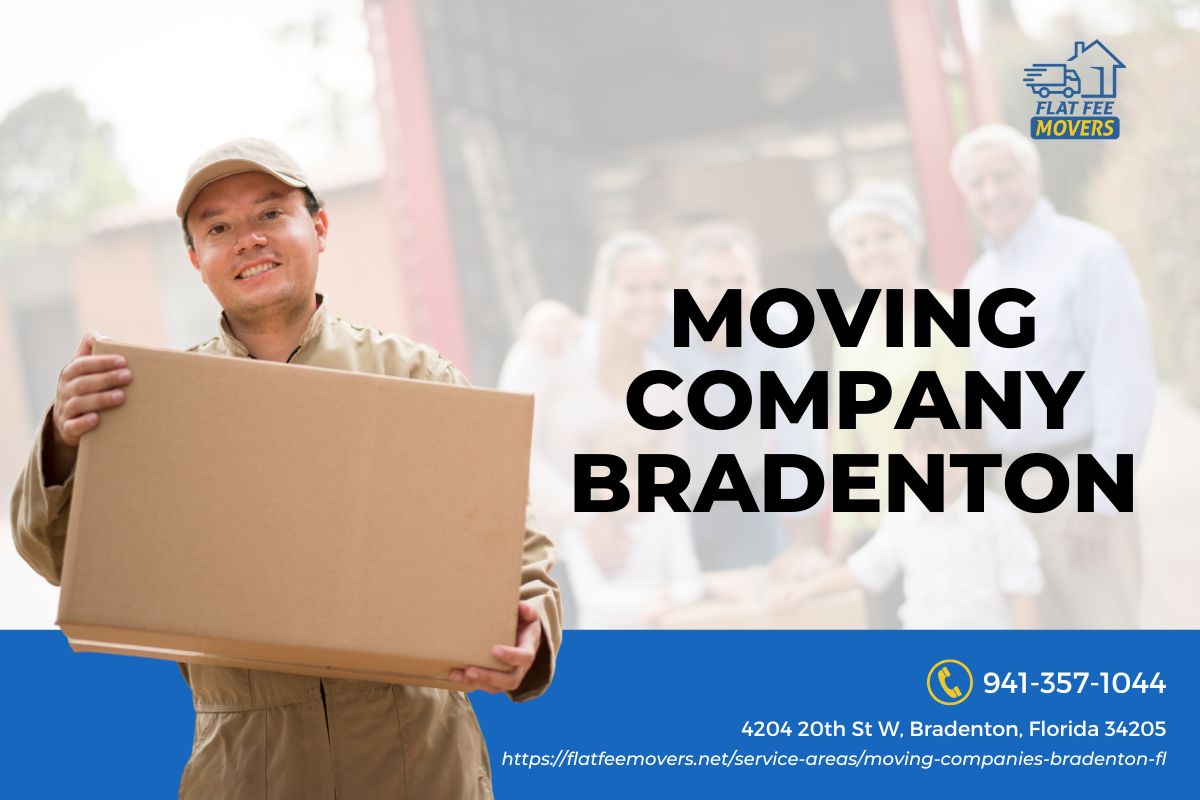


Introduction
Moving offices can be a challenging task, especially when you have multiple locations to coordinate. In this article, we will discuss the best strategies and tips for effectively coordinating multiple office locations during a commercial move in Bradenton. Whether you are a small business or a large corporation, these guidelines will help streamline the process and ensure a successful transition.
Table of Contents
Understanding the Importance of Coordination Choosing the Right Commercial Movers in Bradenton Creating a Detailed Moving Plan for Each Location Assigning Responsibilities to Key Employees Communicating Effectively with Staff Utilizing Technology for Streamlined Coordination Conducting Site Visits and Assessments Coordinating Furniture and Equipment Logistics Managing Inventory and Asset Tracking Coordinating IT Infrastructure and Services Addressing Security Concerns during the Move Preparing Employees for the Transition Minimizing Downtime during the Move Coordinating Utilities and Service Providers Arranging Temporary Storage, if Necessary Updating Business Information and Address Details Ensuring Compliance with Local Regulations and Permits Coordinating with Building Management Teams at Each Location Managing Budgets and Expenses during the Move Handling Unexpected Challenges or Delays Documenting and Reviewing the Moving Process Providing Support and Resources for Employees Celebrating the Successful Completion of the Move Frequently Asked Questions (FAQs) 25.Conclusion1. Understanding the Importance of Coordination
Coordinating multiple office locations during a commercial move is crucial for ensuring a smooth transition process without disruptions to business operations.
2. Choosing the Right Commercial Movers in Bradenton
Finding reliable and experienced commercial movers in Bradenton is essential to the success of your office move. Look for movers who specialize in commercial relocations and have a proven track record of handling similar projects.
3. Creating a Detailed Moving Plan for Each Location
To effectively coordinate multiple office locations, it is important to create a detailed moving plan for each site. This plan should outline the specific tasks and timelines for each location, including packing, transportation, and setup at the new premises.
4. Assigning Responsibilities to Key Employees
Delegate responsibilities to key employees who will be responsible for overseeing the move at each location. These individuals should have a clear understanding of their roles and be prepared to communicate with the moving team and address any issues that may arise.
5. Communicating Effectively with Staff
Clear and effective communication with staff is crucial during a commercial move. Keep employees informed about the moving process, address any concerns or questions they may have, and provide regular updates on the progress.
6. Utilizing Technology for Streamlined Coordination
Take advantage of technology tools such as project management software, communication platforms, and tracking systems to streamline coordination between multiple office locations. These tools can help keep everyone on the same page and ensure efficient collaboration.
7. Conducting Site Visits and Assessments
Before the move, conduct site visits and assessments at each location to identify any potential challenges or obstacles that may need to be addressed during the move. This will also help determine the logistics involved in moving furniture, equipment, and other assets.
8. Coordinating Furniture and Equipment Logistics
Coordinate with your commercial movers to ensure proper handling of furniture and equipment logistics. This includes disassembling furniture, packing fragile items securely, labeling boxes accurately, and ensuring all items are transported safely to their new locations.
9. Managing Inventory and Asset Tracking
Keep track of your inventory and assets throughout the moving process. Use a system or software to label and track each item, ensuring nothing gets lost or misplaced during the move. This will also facilitate the setup process at the new premises.
10. Coordinating IT Infrastructure and Services
Coordinate with your IT team or external service providers to ensure a seamless transition of your IT infrastructure and services. This includes transferring data, setting up networks and servers, and ensuring all systems are up and running smoothly at the new locations.
11. Addressing Security Concerns during the Move
Security should be a top priority during a commercial move. Implement measures to protect sensitive information, equipment, and assets during transportation and setup at the new locations. This may include hiring security personnel or utilizing secure storage facilities.
12. Preparing Employees for the Transition
Prepare employees for the transition by providing them with information about the new locations, any changes in procedures or policies, and an opportunity to voice their concerns or ask questions. This will help alleviate stress and ensure a smoother transition.
13. Minimizing Downtime during the Move
Minimizing downtime is crucial to maintain productivity during a commercial move. Plan the move in stages or outside of regular business hours to minimize disruptions. Additionally, consider providing temporary workspace arrangements if necessary.
14. Coordinating Utilities and Service Providers
Coordinate with utility companies and service providers to ensure uninterrupted services at your new office locations. Arrange for utilities such as electricity, internet, water, and phone lines to be activated before the move-in date.
15. Arranging Temporary Storage, if Necessary
If you require temporary storage for items that cannot be immediately moved into the new locations, make arrangements with a reputable storage facility in Bradenton. Ensure that all items are securely stored and easily accessible when needed.
16. Updating Business Information and Address Details
Update your business information and address details across all relevant platforms, including your website, online directories, and marketing materials. Notify clients, suppliers, and other stakeholders about the move and provide them with updated contact information.
17. Ensuring Compliance with Local Regulations and Permits
Check local regulations and obtain any necessary permits or licenses required for the move. Ensure compliance with zoning laws, parking restrictions, and any other regulations specific to your new office locations.
18. Coordinating with Building Management Teams at Each Location
Establish a good working relationship with the building management teams at each location. Coordinate access, parking, loading/unloading areas, and any other building-specific requirements to ensure a smooth move-in process.
19. Managing Budgets and Expenses during the Move
Create a budget for the commercial move and closely monitor expenses throughout the process. Keep track of costs related to packing materials, moving services, storage facilities, utilities activation fees, permits/licenses, and any other associated expenses.
20. Handling Unexpected Challenges or Delays
Despite thorough planning, unexpected challenges or delays may arise during a commercial move. Have contingency plans in place to address these issues promptly and efficiently. Maintain open lines of communication with all stakeholders to keep them informed about any changes or delays.
21. Documenting and Reviewing the Moving Process
Document the entire moving process for future reference. Take photos before and after the move to document any damages or issues that may arise during transportation or setup at the new locations. Review the process to identify areas for improvement in future moves.
22. Providing Support and Resources for Employees
Provide support and resources for employees throughout the moving process. This may include assistance with packing/unpacking personal belongings, providing relocation resources, or offering counseling services to alleviate stress associated with the move.
23. Celebrating the Successful Completion of the Move
Once the move is successfully completed, take the time to celebrate the accomplishment with your team. Recognize and appreciate their efforts in ensuring a smooth transition and acknowledge any challenges that were overcome during the process.
Frequently Asked Questions (FAQs)
Q1: How do I choose the right commercial movers in Bradenton? A1: When choosing commercial movers in Bradenton, look for experience, reliability, and a proven track record in handling similar projects. Ask for referrals and read reviews to ensure you select a reputable company.
Q2: How far in advance should I start planning my office move? A2: It is recommended to start planning your office move at least three to six months in advance. This will allow ample time to coordinate logistics, communicate with staff, and address any unforeseen challenges that may arise.
Q3: How can I minimize disruptions to business operations during the move? A3: To minimize disruptions, consider moving in stages or outside of regular business hours. Additionally, provide temporary workspace arrangements if necessary and ensure effective communication with staff throughout the entire process.
Q4: What steps should I take to ensure data security during the move? A4: To ensure data security during the move, back up all important http://stephenojjf787.iamarrows.com/why-you-should-hire-a-local-commercial-moving-company-in-bradenton files and data before the relocation. Utilize secure storage systems during transportation and implement measures such as password protection and encryption.
Q5: Should I hire professional packers for my office move? A5: Hiring professional packers can save time and ensure proper handling of sensitive equipment and belongings. Consider your budget and specific needs when deciding whether to hire professional packers or handle the packing internally.
Q6: How can I keep employees motivated during the move? A6: Keep employees motivated by keeping them informed about the progress of the move, involving them in decision-making processes whenever possible, providing support resources, and recognizing their efforts throughout the entire moving process.
Conclusion
Coordinating multiple office locations during a commercial move in Bradenton requires careful planning, effective communication, and attention to detail. By following the strategies and tips outlined in this article, you can ensure a successful transition while minimizing disruptions to business operations. Choose the right commercial movers, create detailed moving plans for each location, assign responsibilities to key employees, and utilize technology tools for streamlined coordination. Keep employees informed and supported throughout the process to maintain morale and productivity. With proper coordination and preparation, your commercial move in Bradenton can be a smooth and successful experience.